Pharaoh Psusennes I Was Buried In The Silver Coffin Decorated With Gold
A. Sutherland - AncientPages.com - Tanis, an ancient area in Egypt's Nile Delta, was an early subject of the archaeologists' interest. The city's name was already well known as Soan (biblical Zoan).
Among many Tanis tombs, one belonged to Psusennes I, the third Pharaoh of the 21st Dynasty who ruled from Tanis between 1047 – 1001 BC.
Outer sarcophagus of the Egyptian King Psusennes' I. Credit: Jerzy Strzelecki - CC BY-SA 3.0
For more than five centuries, looters have plundered most graves of Egyptian pharaohs. One grave, however, was in some way miraculously omitted and it was the tomb of the so-called Silver Pharaoh enshrined in a silver coffin.
The name Psusennes is the Hellenized version, which in Greek means Pasibkhanu or Egyptian Hor-Pasebakhaenniut ("The Star Appearing in the City"), and his throne name was translated to" Great are the Manifestations of Ra, chosen of Amun." Psusennes I was the third king of the Twenty-first Dynasty and is probably the best known of all this Dynasty's kings.
In February 1939, the French archaeologist Pierre Montet (1885 – 1966) and his workers discovered an underground chamber blocked by a stone. It was a tomb consisting of four decorated limestone chambers containing sarcophagi belonging to Osorkon III and Prince Hornakht and the remnants of Takelot II's and Osorkon I's tombs.
In 1940, Montet and his workers continued the excavations at the ancient capital of Tanis and discovered one complete, undisturbed tomb.
Credit: Public Domain and Cairo Museum, Egypt - Compiled by AncientPages.com
The tomb belonged to the 21st Dynasty king Psusennes I and the tombs of the Pharaohs Osorkon I, Takelot II, Sheshonq III, and others in a royal necropolis atop Tanis.
The doorway of the Pharaoh's tomb was found tightly sealed, and in fact, when Montet discovered it, this took six days to shatter it. Finally, the tomb was entered by archaeologists who saw it was "filled with marvels of 1001 knights". It included both beautiful and valuable objects, but at first, there was no sign of any mummy or casket because they were sealed inside a huge stone sarcophagus.
From Psusennes' treasure: a lapis-lazuli necklace of King Psusennes, a 1,8 kg solid gold bracelet, a 8 kg solid gold necklace of Psusenne. Credit: Cairo Egyptian museum via Global Egyptian Museum
The sarcophagus - huge that it almost took all space in the chamber – was found sculpted and decorated with hieroglyphs. The sarcophagus' lid weighed halftone, and there was also additional stone sarcophagus within it, and it was beautifully carved, too.
The archaeologists worked hard additional six days to locate the inner casket finally. The chamber was opened by moving the door block of granite, and in a narrow room, there was enough space for a decorated coffin made of rose granite. At the feet of the sarcophagus stood a canopic jar, which contained the king's internal organs and vessels in gold and silver.
The king's body was covered with precious amulets and semiprecious stones.
Psusennes' mummy - destroyed due to Lower Egypt's moist location - was placed inside a coffin of silver, which was more valuable than gold as it had to be imported to Egypt.
The jewelry and other grave goods survived in perfect condition. The coffin was then placed in a black granite sarcophagus, which was in turn placed in a red granite outer sarcophagus.
Gold and lapis lazuli collar of Psusennes I, Cairo Museum. Credit: tutincommon (John Campana) - CC BY 2.0
Especially notable amongst the items discovered in the tomb was Psusennes' solid gold mask, which was found completely intact.
The mask – considered one of the treasure masterpieces - was made of gold and lapis lazuli and held inlays of black and white glass for the eyes and eyebrows of the object. It has a maximum width and height of 38 cm and 48 cm, respectively.
Archaeologists discovered that the Pharaoh's "fingers and toes had been encased in gold stalls, and he was buried with gold sandals on his feet. The finger stalls are the most elaborate ever found, with sculpted fingernails. Each finger wore an elaborate ring of gold and lapis lazuli or some other semiprecious stone.
The intact tomb of Pharaoh Psusennes I can only be compared to Tutankhamun's, and it testifies Psusennes I had a rich funeral.
Updated on February 12, 2022
Written by – A. Sutherland AncientPages.com Staff Writer
Copyright © AncientPages.com All rights reserved. This material may not be published, broadcast, rewritten or redistributed in whole or part without the express written permission of AncientPages.com
Expand for referencesMore From Ancient Pages
-
 India’s Tradition Of Advanced Metallurgy, Craftsmen And Blacksmiths Is Longer Than Thought
Ancient Technology | Mar 19, 2019
India’s Tradition Of Advanced Metallurgy, Craftsmen And Blacksmiths Is Longer Than Thought
Ancient Technology | Mar 19, 2019 -
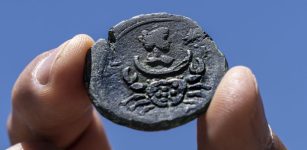 Rare 1,850-Year-Old Bronze Zodiac Coin Discovered During Underwater Survey Off Israel’s Coast
Archaeology | Jul 27, 2022
Rare 1,850-Year-Old Bronze Zodiac Coin Discovered During Underwater Survey Off Israel’s Coast
Archaeology | Jul 27, 2022 -
 Famous Philosopher Plato: One The Greatest Thinkers Of All Time And His Concept Of Soul
Featured Stories | Jun 25, 2018
Famous Philosopher Plato: One The Greatest Thinkers Of All Time And His Concept Of Soul
Featured Stories | Jun 25, 2018 -
 The Tuli Mummy: Botswana’s Only Ancient Mummified Human Body Discovered So Far
Ancient History Facts | Oct 14, 2016
The Tuli Mummy: Botswana’s Only Ancient Mummified Human Body Discovered So Far
Ancient History Facts | Oct 14, 2016 -
 Grutte Pier – Legendary Giant Frisian Freedom Fighter Who Sought Revenge
Featured Stories | Dec 20, 2018
Grutte Pier – Legendary Giant Frisian Freedom Fighter Who Sought Revenge
Featured Stories | Dec 20, 2018 -
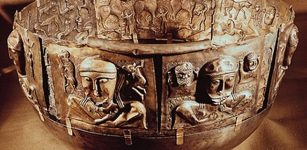 Gundestrup Cauldron: Great Gilded Silver Vessel Decorated With Scenes Derived From Celtic Mythology
Artifacts | May 30, 2016
Gundestrup Cauldron: Great Gilded Silver Vessel Decorated With Scenes Derived From Celtic Mythology
Artifacts | May 30, 2016 -
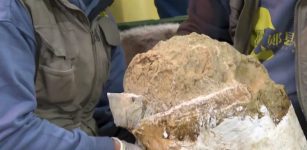 Fossilized Million-Year-Old Human Skull Of Yunxian Man Excavated In China
Archaeology | Jan 10, 2023
Fossilized Million-Year-Old Human Skull Of Yunxian Man Excavated In China
Archaeology | Jan 10, 2023 -
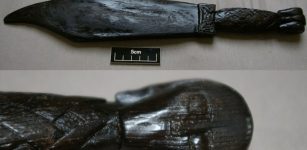 1,000-Year-Old Viking Weaver’s Sword Reveals Its Secrets
Archaeology | Apr 17, 2022
1,000-Year-Old Viking Weaver’s Sword Reveals Its Secrets
Archaeology | Apr 17, 2022 -
 ‘Impossible’ Ancient Knowledge Of The Gods’ Star – Mysterious Beings – Part 2
Ancient Mysteries | Sep 4, 2021
‘Impossible’ Ancient Knowledge Of The Gods’ Star – Mysterious Beings – Part 2
Ancient Mysteries | Sep 4, 2021 -
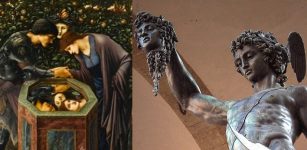 Perseus – Courageous Adventurer Who Fulfilled A Prophecy
Featured Stories | Jul 31, 2018
Perseus – Courageous Adventurer Who Fulfilled A Prophecy
Featured Stories | Jul 31, 2018 -
 Linked Human Skeletons Lying In Spiral Circle Unearthed In Pre-Aztec Burial Pit Near Mexico City
Archaeology | Feb 7, 2018
Linked Human Skeletons Lying In Spiral Circle Unearthed In Pre-Aztec Burial Pit Near Mexico City
Archaeology | Feb 7, 2018 -
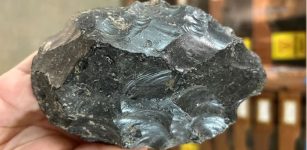 1.2-Million-Year-Old Obsidian Axe Made By Unknown Human Species Discovered In Ethiopia
Archaeology | Jan 25, 2023
1.2-Million-Year-Old Obsidian Axe Made By Unknown Human Species Discovered In Ethiopia
Archaeology | Jan 25, 2023 -
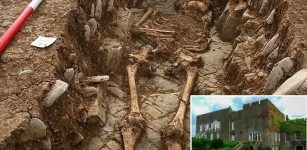 Mysterious Medieval Cemetery In Wales With People Buried In Unusual Positions Puzzles Archaeologists
Archaeology | Jan 3, 2024
Mysterious Medieval Cemetery In Wales With People Buried In Unusual Positions Puzzles Archaeologists
Archaeology | Jan 3, 2024 -
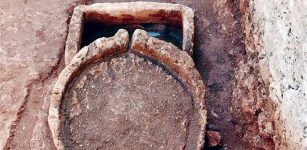 Oldest Olive Oil Press Facilities Owned By Mysterious Woman ‘Arete’ Unearthed In Antalya, Turkey
Archaeology | Apr 2, 2017
Oldest Olive Oil Press Facilities Owned By Mysterious Woman ‘Arete’ Unearthed In Antalya, Turkey
Archaeology | Apr 2, 2017 -
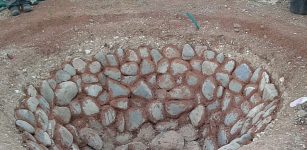 Prastio-Mesorotsos Excavations: Neolithic oven prepared food for 200 guests
News | Aug 30, 2015
Prastio-Mesorotsos Excavations: Neolithic oven prepared food for 200 guests
News | Aug 30, 2015 -
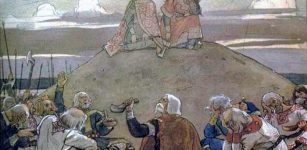 Guardians Of The Mounds – Battle To Save Scythian Burial Mounds From Destruction Continues
Archaeology | May 11, 2021
Guardians Of The Mounds – Battle To Save Scythian Burial Mounds From Destruction Continues
Archaeology | May 11, 2021 -
 Native American Sun Dance: Important Ceremony Of The Plains Indians Of North America
Ancient History Facts | May 20, 2016
Native American Sun Dance: Important Ceremony Of The Plains Indians Of North America
Ancient History Facts | May 20, 2016 -
 Enigma Of Mount Ararat – Researchers Are Determined To Reveal The Truth To The World
Featured Stories | Jun 27, 2014
Enigma Of Mount Ararat – Researchers Are Determined To Reveal The Truth To The World
Featured Stories | Jun 27, 2014 -
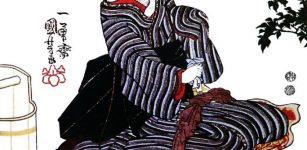 Jigai – Suicide Ritual For Wives Of Samurai – Feminine Counterpart Of Seppuku
Ancient History Facts | Feb 24, 2018
Jigai – Suicide Ritual For Wives Of Samurai – Feminine Counterpart Of Seppuku
Ancient History Facts | Feb 24, 2018 -
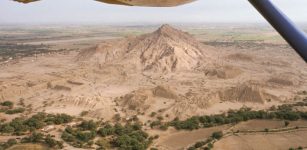 Scientists Caution Against Over-Interpreting Influence Of Climate On Cultural Change And Catastrophe
Archaeology | Aug 18, 2022
Scientists Caution Against Over-Interpreting Influence Of Climate On Cultural Change And Catastrophe
Archaeology | Aug 18, 2022




